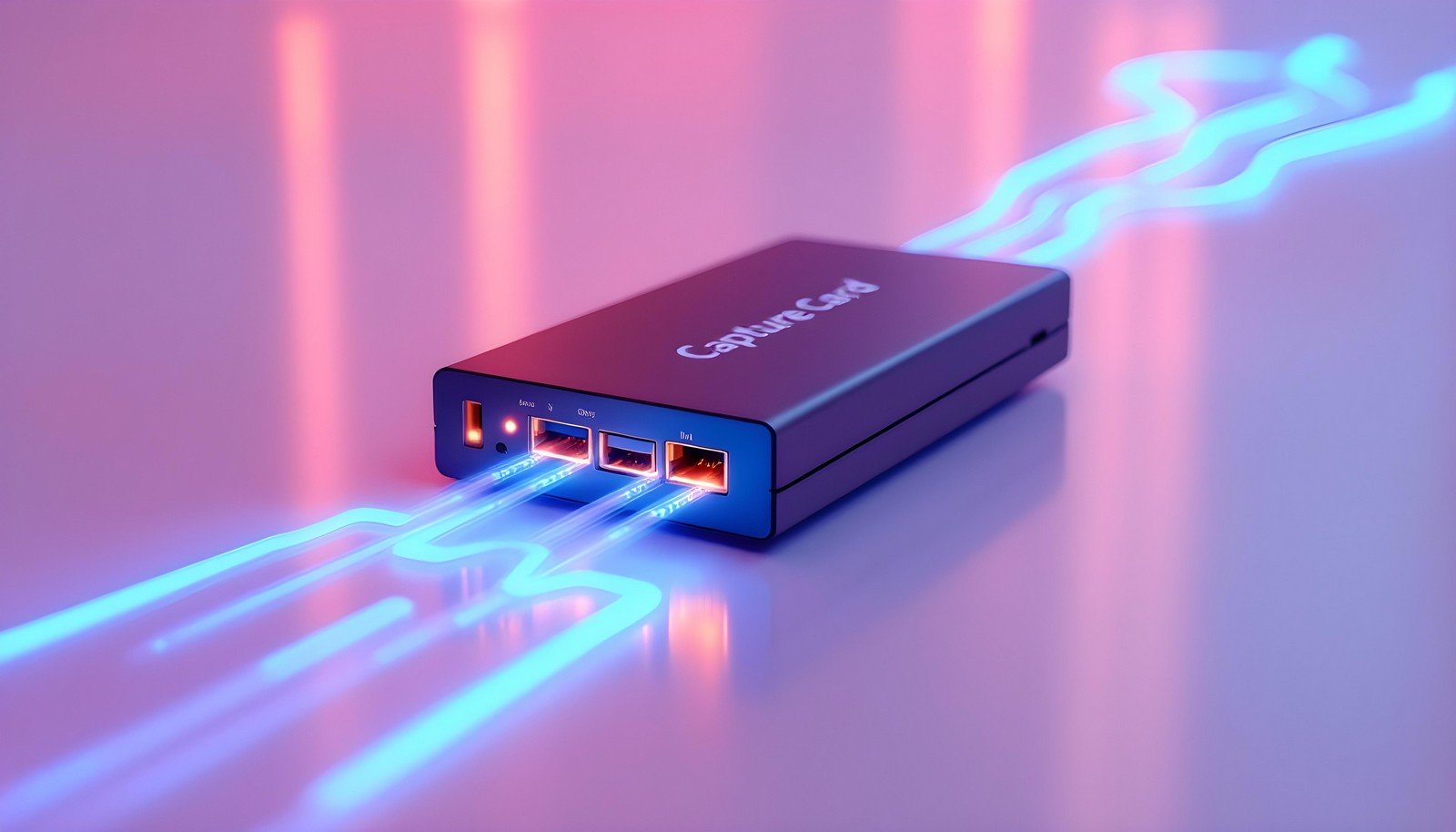Capture Card

Quick Navigation:
- Capture Card Definition
- Capture Card Explained Easy
- Capture Card Origin
- Capture Card Etymology
- Capture Card Usage Trends
- Capture Card Usage
- Capture Card Examples in Context
- Capture Card FAQ
- Capture Card Related Words
Capture Card Definition
A capture card is a hardware device that converts video signals from external sources, such as cameras or gaming consoles, into digital format for use on a computer. This conversion enables activities like live streaming, video recording, and broadcasting. Capture cards are commonly used in content creation, gaming, and professional video production, supporting high-quality video resolutions, frame rates, and encoding standards.
Capture Card Explained Easy
Think of a capture card like a translator. If you’re playing a video game and want to show your gameplay live to friends online, the capture card takes what’s happening on your game console and translates it into something your computer can understand and share.
Capture Card Origin
Capture cards became prominent in the early 2000s as streaming platforms and online video sharing gained popularity. Their initial designs catered to broadcast professionals, but they quickly adapted for consumer markets with advancements in gaming and streaming technologies.
Capture Card Etymology
The term “capture card” derives from its purpose: to “capture” video and audio data and channel it into digital formats.
Capture Card Usage Trends
Over the last decade, capture cards have become staples for content creators on platforms like Twitch, YouTube, and Facebook Live. With the rise of eSports and gaming culture, their popularity has skyrocketed, making them essential for gamers, streamers, and video enthusiasts.
Capture Card Usage
- Formal/Technical Tagging:
- Video Encoding
- Content Creation
- Game Streaming - Typical Collocations:
- "external capture card"
- "high-resolution capture"
- "gameplay streaming"
- "live recording setup"
Capture Card Examples in Context
- A YouTuber uses a capture card to record high-definition gameplay for their channel.
- Streamers rely on capture cards to broadcast PlayStation or Xbox gameplay on Twitch.
- Video producers use capture cards to connect professional cameras to their editing systems.
Capture Card FAQ
- What is a capture card used for?
It is used to record or stream video from external devices like gaming consoles or cameras. - Do you need a capture card for streaming?
Yes, for high-quality streaming from external devices, a capture card is essential. - Can a capture card record audio?
Yes, most capture cards record both video and audio signals. - Are capture cards only for gaming?
No, they are also used in video production, education, and professional broadcasting. - What’s the difference between internal and external capture cards?
Internal cards are installed in a computer, while external ones connect via USB or Thunderbolt. - Do capture cards affect video quality?
A high-quality capture card enhances the video output without degrading its resolution or frame rate. - What resolution do capture cards support?
Most modern capture cards support up to 4K resolution. - Can capture cards work with any device?
Capture cards typically work with HDMI-enabled devices but may require adapters for other formats. - Do capture cards require software?
Yes, they often need companion software for setup and use. - How much does a capture card cost?
Prices vary widely, starting from $50 for basic models to $300+ for advanced ones.
Capture Card Related Words
- Categories/Topics:
- Video Recording
- Streaming
- Gaming Accessories
Did you know?
Capture cards played a crucial role in the rise of live streaming platforms like Twitch. Early adopters were gamers who wanted to share their gameplay, paving the way for today’s massive eSports industry.
PicDictionary.com is an online dictionary in pictures. If you have questions or suggestions, please reach out to us on WhatsApp or Twitter.Authors | Arjun Vishnu | @ArjunAndVishnu

I am Vishnu. I like AI, Linux, Single Board Computers, and Cloud Computing. I create the web & video content, and I also write for popular websites.
My younger brother, Arjun handles image & video editing. Together, we run a YouTube Channel that's focused on reviewing gadgets and explaining technology.



Comments powered by CComment